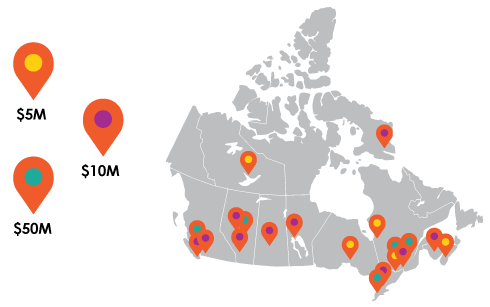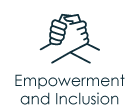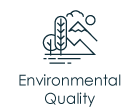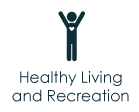Spotlight on Finalists
This page has been archived on the Web
Information identified as archived is provided for reference, research or recordkeeping purposes. It is not subject to the Government of Canada Web Standards and has not been altered or updated since it was archived.
The first round of the Smart Cities Challenge is closed. The Government of Canada announced the four winners (City of Montréal, Québec; Nunavut Communities, Nunavut; City of Guelph and County of Wellington, Ontario; and Town of Bridgewater, Nova Scotia) on May 14, 2019.
PDF Version (297.15 KB) | Flip Book (666.00 BB)
Help on accessing alternative formats, such as PDF, PPT and ZIP files, can be obtained in the alternate format help section.
Table of Contents
- Map of Finalists
- Focus Areas
- Finalist Communities
- $10 Million Prize Category
- Town of The Pas, Opaskwayak Cree Nation, Rural Municipality of Kelsey, Manitoba
- City of Côte Saint-Luc, Quebec
- Nunavut Communities, Nunavut
- St. Mary's First Nation and City of Fredericton, New Brunswick
- Parkland, Brazeau, Lac Ste Anne and Yellowhead Counties, Alberta
- City of Airdrie and Area, Alberta
- City of Richmond, British Columbia
- City of Guelph and Wellington County, Ontario
- City of Saskatoon, Saskatchewan
- Greater Victoria, British Columbia
- $50 Million Prize Category
Map of Finalists

Focus Areas






Finalist Communities
$5 Million Prize Category
1. Biigtigong Nishnaabeg (Pic River First Nation), Ontario
Population: 443
Focus Areas


Challenge Statement
By means of active, cross-generational, technology-empowered, real-world participation in the intergenerational transfer of traditional Nishnaabe knowledge through the medium of our language, and the bilingual delivery of modern K-12 STEM knowledge, our community will transform our youth into better-educated, more employable, better-grounded, and more holistically Nishaabe people.
Summary
We are indigenously embracing the bilingual (Nishnaabemwin and English), K-12 STEM education of our youth. At the end of high school, our youth will have received more than 2,000 hours of mobile-enabled, online Nishnaabe-language immersion instruction in all of our core aadsookaanan (sacred stories). Additionally, our youth will be nearly-completely able to comprehend spoken Nishnaabemwin, will have attained a basic proficiency in coding and robotics, and will possess a strong foundation in mathematics and science. All STEM subject videos and courses will be available under a creative commons license, in both Nishnaabemwin and in English. All of this education will occur online with a strong real-world participation component built into the program. Our community's open source, mobile-enabled, eLearning platform facilitates the learning of the STEM subjects. And, our open source, mobile-enabled, eAcquisition platform facilitates the acquisition of our Nishnaabe language. The entire educational experience is tied together with our community's mobile-enabled meetup platform serving as a bridge between the digital, online world and the material, real world. Our youth are strongly encouraged and empowered to participate not only in online communities, but in the traditional Nishnaabe activities going on in the real-world community, as well.
2. Cree Nation of Eastmain, Quebec
Population: 866
Focus Areas


Challenge Statement
"IMPROVING COMMUNITY WELL-BEING"
Our community will develop an affordable Net Zero Energy Housing Program, offering culturally appropriate designs, using smart technologies, innovative building techniques and alternative energy systems in order to address the housing shortage crisis, the poor-quality and costly construction of houses in Eastmain and Indigenous communities across Canada.
Summary
As our Challenge Statement says, the Cree Nation of Eastmain (CNE) is committed to improving the quality of life and the well-being of its members. As a remote Indigenous community, CNE, like other Indigenous communities across Canada, is faced with a critical housing shortage, compounded by poor quality and costly construction.
Housing is inarguably the foundation of a strong, healthy community without which communities struggle with various social, environmental and health issues. Through local consultations, CNE has determined that high construction costs combined with the high costs of home operation and maintenance, the result of inappropriate construction materials and techniques, are significant barriers to homeownership in Eastmain.
Smart technologies, sustainable building practices and alternative energy systems are the cornerstone of CNE's plan to develop, in collaboration with public and private sector stakeholders, an affordable, culturally-appropriate Net Zero Energy (NZE) housing program, for new and existing housing, to respond to its housing crisis. The NZE program is designed to encourage openness, transparency and transferability.
Through capacity-building, job creation and encouraging community participation, our NZE program will foster prosperity and a sense of pride in the community and in the culture, becoming a model for Indigenous communities across Canada.
3. Town of Bridgewater, Nova Scotia
Population: 8,532
Focus Areas


Challenge Statement
Our community will lift 20% of its residents out of energy poverty by 2028.
Summary
Energy poverty is having a profound and debilitating impact on our community. It systematically strips many of our residents of their dignity and damages their physical and mental well-being.
Yet, the real, lasting, and practical solutions to this problem are so close at hand that we can already see them emerging. Our community is planning for a new kind of energy economy - one where energy services are universally available and affordable, clean, efficient, and secure. We are ready for a massive shift toward a smart energy economy…one that leaves no family behind. We are also ready to show Atlantic Canada, and the nation, how it can be done.
With $5 million in Smart Cities funding, our town will install sophisticated energy monitoring and communications equipment in over 1,000 low-income homes, develop a self-funding energy retrofit financing program, improve its transportation systems, and increase local clean tech sector training and literacy. It will allow our community partners to increase their capacity to exchange knowledge and work more efficiently and effectively to reduce, and ultimately end, energy poverty in our community.
Every dime will be used, because the need is so great.
4. Mohawk Council of Akwesasne, Quebec
Population: 12,315
Focus Areas


Challenge Statement
Decrease the rate of new cases of diabetes per year in Akwesasne to the Canadian average (0.5%; 5.9/1,000) by improving community wellness using traditional approaches encompassing holistic Indigenous practices, improved access to community services and health diagnostics.
Summary
The scourge of diabetes falls heavily on Aboriginal people around the world. In Canada, the rate of diabetes for Indigenous people is 3 times that of other Canadians. The Mohawk Council of Akwesasne will use the Smart Cities Challenge to decrease the rate of new cases of diabetes, and provide a framework for similar communities.
Drawing on holistic Indigenous practices focussed on protecting and restoring the natural world, our program will integrate modern health diagnostics, improved diet and food security, access to health services and physical fitness as ways to reduce the risk and prevalence of diabetes diagnoses.
Smart technologies in the form of electric vehicles, smart greenhouses and an integrating mobile/websystem will be key tools in achieving positive change in lifestyle, education and accessibility issues at the root of problem.
Akwesasne community members will share personal scoring on measures related to the areas of focus publicly but anonymously, so that the community's digital scorecard is transparent and a shared challenge. Software will seamlessly organize reporting, communication with health professionals, scheduling clinical access, food delivery and the education of risk reduction. Traditional practices will renew our Mind, Body and Spirit, while digital technology will help overcome our geographic challenges.
5. City of Yellowknife, Northwest Territories
Population: 19,569
Focus Areas


Challenge Statement
Yellowknife will experience a rise in our community's social and environmental well-being by transforming the simple lamppost into a beacon for sustainability.
Summary
Our proposed concept is to make the lamppost a beacon for sustainability. The sustainability referenced in this challenge statement ranges from ecological to financial to social sustainability, which we will realize by incorporating a variety of technological innovations into the lampposts around our city to improve quality of life for our residents and visitors in several ways.
The first step will be creating a mesh network among our lampposts that allow them to communicate with each other and with a central location. From there, much like apps on a smart phone, a variety of innovative ideas could be incorporated into the lamppost to help us achieve our desired outcomes and to improve the sustainability of Yellowknife. These innovations will include smart lighting that can be motion activated or dimmed and brightened as needed, electric vehicle charging stations, data monitoring and collection, interactive tourism information, and Wi-Fi hotspots. This mesh network and technological innovations will help Yellowknife to become an innovative and adaptable Smart City with the ability to adapt with the times as technology advances.
$10 Million Prize Category
6. Town of The Pas, Opaskwayak Cree Nation, Rural Municipality of Kelsey, Manitoba
Population: 10,827
Focus Areas


Challenge Statement
Our community will utilize LED Smart Farm technology to support local nutritious food growth and promote food security, create a smart phone distribution system and integrate wearable technology to achieve a 40% reduction in the number of imported vegetables and a 20% reduction in community diabetes rates by 2023.
Summary
Our challenge centres around food security and reversing the escalation of the occurrence rate of diabetes by leveraging the local LED Smart Farm technology. The Smart Farm produces fresh fruits and vegetables within weeks without the use of pesticides and with low impact on land resources. The quantity of food that can be produced is flexible and based on demand. The region will be able to depend on a stable, nutritious local food supply with a concurrent reduction in the requirement for long distance transportation resulting in fresher food, reduction of food waste and a reduction in the carbon footprint due to fewer long distance truck deliveries.
Food distribution will be aided through the development and use of a smart phone app and the use of electric vehicle and drone delivery technology. The health benefits realized from increased consumption of healthy foods will be monitored through data collection via wearable technology. Bio-metric data such as blood sugar levels, heart rate and blood pressure can be utilized for individual feedback or aggregated to support ongoing education and incentives to encourage continued lifestyle changes among the population of the region and for other communities who wish to adopt similar strategies.
7. City of Côte Saint-Luc, Quebec
Population: 34,464
Focus Areas


Challenge Statement
Our city will provide socially isolated seniors with confidence they can live more autonomously, secure in the knowledge that the city is looking out for their well-being.
Summary
Spaces in nursing homes and senior residences are limited and these accommodations often cost more than seniors can afford. Many seniors prefer to continue living in their own homes and apartments. This puts them at risk, especially if they have health concerns, live alone, or have a limited support network.
More than 25% of all seniors in Canada live alone where there is often no one to watch over them to intervene when a problem arises. Our city offers many senior programs, but we feel it crucial to find technological ways to connect with isolated seniors.
We seek to implement a comprehensive yet cost effective solution that will provide peace of mind, security, and support for those who need it. It must be easy to use and affordable.
Our solution will help seniors who live alone by installing home monitoring sensors, GPS tracking, fall sensors and environmental sensors. It will use AI techniques to identify problems and share information gleaned with community, city and health services.
It will allow us to know if the person living alone is okay, or not okay, and will route "situation analysis" reports to appropriate service organizations so that they can deliver timely intervention.
8. Nunavut Communities, Nunavut
Population: 35,944
Focus Areas


Challenge Statement
Our communities will implement protective and preventative measures to reduce the risk of suicide in Nunavut, which is ten times the national average, and increase the amount and accessibility of peer support networks, educational resources and creative outlets that promote positive Mental Health to all Nunavummiut.
Summary
The Community, Connectivity, and Digital Access for Suicide Prevention in Nunavut is a collaborative effort to implement protective and preventive measures to reduce the risk of suicide in Nunavut through a decentralized and community-based digital health and wellness platform.
This platform will leverage digital access and connectivity to increase the availability and accessibility of mental health resources and support systems like peer to peer networks, educational initiatives, and creative outlets to all Nunavummiut. This includes an Inuktitut based digital literacy curriculum, improved and innovative network infrastructure, mobile applications, gamified interventions, digital art therapy, and permanent makerspaces available in each community.
This platform will rely heavily on community leadership and participation, and is based on Inuit Qaujimajatuqangit, the Inuit knowledge system and worldview, to provide the foundations upon which social, emotional, spiritual, cognitive, and physical well-being define health and wellness. It will provide Inuit youth with contemporary forms to engage with their heritage, reinforce Inuit language and enable cultural continuity through the use of technology. This is a transformative opportunity to incorporate a framework of cultural safety and trauma-informed care toward suicide prevention that is responsive to community needs.
9. St. Mary's First Nation and City of Fredericton, New Brunswick
Population: 58,220
Focus Areas

Challenge Statement
"My city does not recognize me or connect me to what matters most; Fredericton will collaborate with First Nations to create an accessible, welcoming, supportive city for youth, newcomers, and an aging population, empowering everyone with a Personalized Inclusion Plan that connects people to create an exceptional quality of life."
Summary
After conducting many rounds of public consultation and listening to citizens speak with passion about issues ranging from basic human needs to the desire for better services, one thing became abundantly clear…the biggest issue facing the community was different for everyone.
With this insight, Smart City Task Force Chair, Adam Bell, approached Deputy Mayor Kate Rogers and asked "what would your best Fredericton be?"
Ms. Rogers, well versed in the City's history, community and ongoing initiatives, responded quickly:
"I want to live in a City that empowers me with a personalized inclusion plan connecting me to things that matter most: Imagine Fredericton, a Digital Fredericton that collaborates with First Nations, welcomes youth, supports newcomers and aging populations, connects people, creating an exceptional quality of life with measurable outcomes."
Thus, laying the groundwork for a Smart Cities Challenge submission focusing on:
- initiatives underway that have meaningful impacts
- a layered approach – core, citizen, and connected community
- putting our most vulnerable, first
- the data, always capture the data
- "It's personal"
- building to replicate
We will build a Smart City that will recognize, connect and enable all citizens, across generations and cultures, in unique and different ways that are meaningful to them.
10. Parkland, Brazeau, Lac Ste Anne and Yellowhead Counties, Alberta
Population: 61,762
Focus Areas


Challenge Statement
Our agricultural community will revitalize and grow through the connection of people to the land and food while attracting citizens to share in its prosperous, innovative and resilient way of life.
Summary
This proposal has a lofty goal. The applicants seek to increase the prosperity and safety of rural communities – farm and rural residential alike – through the full use of integrated data and connected technologies. Increased rural prosperity will support more people living on farms and in rural areas. This will require greater technology adoption, proper decision support tools and market linkage between rural/farm areas and urban Canada and beyond.
The proposal seeks to build more prosperous market and knowledge links with urban Canada and beyond. Data-driven discussions will bring farmers closer to people's kitchen tables and address misconceptions about how our food is produced. We will improve the safety and security in rural areas by reducing accidents between large machinery, and improve regional security through technology adoption.
Overall, these initiatives seek to create a more prosperous and safe way of life in rural Canada. In turn, a growing population is anticipated; a greater interest in living a rural lifestyle will prompt more young people to move into farming, and incent greater inter-generational farm transfer.
11. City of Airdrie and Area, Alberta
Population: 72,874
Focus Areas


Challenge Statement
Become Canada's healthiest community, by engaging and securing the participation of all in the community to create a community healthy culture that improves social, economic, physical and health care environments and individual characteristics and behaviours, so that healthy life expectancy is increased by 3+ years over 5 years.
Summary
We will become Canada's Healthiest Community – Own Our Own Health. We will increase healthy life expectancy by 3+ years over 5 years.
That will be enabled through our Smart Community Project.
Vision: "Own Our Own Health Information: Enabling efforts to be Canada's Healthiest Community – Individually and Collectively"
Mission: "Create a Community "Health Information Sharing" Culture"
Over the past two years, we have engaged hundreds of individuals and dozens of organizations in the community in thinking about what it would take to be Canada's Healthiest Community.
Five projects have been identified:
- Airdrie & Area Blue Zone Project
- Airdrie & Area Health Park Project
- Airdrie & Area Need-Based Networks Project
- Airdrie & Area Health Coop Project
- Airdrie & Area Smart Community Project
The Smart Community Project will leverage and connect existing and add new infrastructure, platforms and applications to create an open data platform for use by all. Data will be secured and customized content pushed out to enable informed action.
The City of Airdrie sponsored this project. We know that one party cannot "do it to" the community. A Health Coop has been incorporated as the tool to bring all together as equal owners and equal beneficiaries.
12. City of Richmond, British Columbia
Population: 198,310
Focus Areas


Challenge Statement
Richmond, an island city with a rapidly growing and diverse population and home of nationally significant infrastructure and government services, requires resilient physical and virtual platforms that are integrated seamlessly across all levels of government to enhance quality of life in day-to-day activities and minimize community impacts from major disasters.
Summary
Richmond is comprised of 17 islands at the mouth of the Fraser River, on the West Coast. A gateway to the Asia Pacific, over 65% of the population originates from Asia Pacific countries. Home to YVR, the Port of Vancouver, and 30 minutes from the US border, Richmond's population, currently 220,000, is expected to reach over 300,000 with the City Centre population tripling, by 2041.
Multi-levels of government and businesses have incident response plans and activation protocols utilizing for communication technology, decision making, and asset mobilization/ movement during an incident. The challenge is systems are not currently interconnected and integrated. This impedes response efforts, resulting in nuisance for citizens with minor events or potentially more serious consequences associated with major events.
Richmond has invested in stable, reliable infrastructure and services as the basis for implementation of the Smart Cities Challenge. Citizen communication and built-in system resilience are essential to an integrated platform enabling data driven decision making to improve response rates and reduce recovery time.
Project goals: Protect our island city; Integrate citizen, infrastructure and emergency data and communication platforms; Bridge language barriers; and Create scalable systems that both enhance daily life and improve emergency response rates and recovery times.
13. City of Guelph and Wellington County, Ontario
Population: 222,726
Focus Areas


Challenge Statement
Guelph/Wellington will become Canada's first technology-enabled Circular Food Economy, reimagining an inclusive food-secure ecosystem that increases access to affordable, nutritious food by 50%, where "waste" becomes a resource, 50 new circular businesses and collaborations are created, and circular economic revenues are increased by 50%: 50x50x50 by 2025.
Summary
Food is a fundamental requirement of life on this planet. However, the basic structure of today's linear "take-make-dispose" food system is unsustainable — economically, socially and environmentally.
Guelph-Wellington aims to become Canada's first circular food economy, bringing our food system and communities back into healthy balance. Through our rural-urban partnership, we will enhance access to nutritious food, turn "waste" into valuable resources and create new economic opportunities.
Situated in the heart of Ontario's Innovation Corridor, Guelph/Wellington is a hub of food innovation and environmental sustainability, making us uniquely positioned to achieve this vision. Leveraging local expertise, big data and the latest technology, we will transform our food ecosystem into a connected "living lab" where researchers, social innovators, farmers, entrepreneurs and other community partners collaborate to solve complex food problems.
The Smart Cities Challenge is an important catalyst, enabling us to fund impactful circular food projects, create collaboration spaces, undertake baseline data mapping to guide programs and planning, create a suite of digital tools, and more.
Together, we will build the "Circular Food Community of the Future," creating positive quadruple bottom line outcomes — prosperity, planet, people and purpose — and share the roadmap with the communities across the country and around the world.
14. City of Saskatoon, Saskatchewan
Population: 246,376
Focus Areas


Challenge Statement
To be the city that breaks the cycle of Indigenous youth incarceration by creating a new cycle focused on building purpose, belonging, security and identity.
Summary
Saskatoon has a bold vision to be a city that supports all individuals to feel a sense of purpose, belonging, security and identity. People are being left behind, many of them are youth, and many of them are urban Indigenous youth. Urban Indigenous youth face multiple challenges that are rooted in intergenerational trauma, racism, and a disrupted relationship with cultural and spiritual traditions. This is manifesting itself in an escalating cycle of crime that results in Saskatoon having a youth incarceration rate that is double the national average.
This cycle of crime and social exclusion is resulting in millions of dollars being spent to warehouse people in facilities where instead of rehabilitating they become hardened and in many cases involved in increasingly serious crime. This cycle continues through generations. The existing system is failing all of us.
The City of Saskatoon has initiated a partnership with key institutions all committed to working together in finding proactive, preventative solutions to youth incarceration. Our Smart Cities Challenge will build on this collaborative work and use innovative technology to strengthen and connect the supports for youth to grow in a positive learning cycle rather than find themselves pulled into a cycle of crime.
15. Greater Victoria, British Columbia
Population: 367,770
Focus Areas


Challenge Statement
"Freedom to move"
We will collaboratively create a multimodal transportation network that is convenient, green and affordable, which will boost South Islanders' mobility wellbeing score by at least 20%.
Summary
We wish to acknowledge we are on the traditional territory of the Coast Salish First Nations.
A Smart City is comprised of countless elements. It is challenging to decide which initiatives to pursue, and what to leave for later.
While our ambition was to work on initiatives on multiple fronts, we saw that as a recipe for mediocrity. We want to create something great, which other cities will emulate.
That's why we chose to go deep on transportation.
Greater Victoria is not a big city by population. It is, however, an important city strategically. Canada's 15th largest metropolitan area. A $5 billion high-tech sector. Located in one of the world's most progressive and innovative regions: The Pacific Northwest. A gateway to Asia. A place where forward-thinkers thrive. A place people visit and tell their friends.
We want Greater Victoria to showcase how mobility can be done right. How everybody should enjoy the freedom of mobility. How all points of friction can be eliminated between multiple modes of transit, even in a single trip. How big data, big ideas, and big thinkers can make a big difference in quality of life, while reducing the impact that cities have on the environment.
$50 Million Prize Category
16. Region of Waterloo, Ontario
Population: 535,154
Focus Areas


Challenge Statement
We will become the benchmark community in Canada for child and youth wellbeing by using early intervention, youth engagement and a connected-community framework to create adaptive, data-driven programs and scalable learning technologies that improve early child development, mental health and high school graduation rates.
Summary
We have selected Healthy Children and Youth as our smart cities challenge area. Based on data and community consultation, we have identified six priority areas of focus that will address through our smart cities initiative: early child development; mental health; bullying; literacy rates; high school graduation rates; and youth sense of belonging. Working with our local youth and community partners from the private, not-for-profit, educational and government sectors, we will develop connected community spaces, broader education platforms and technology-based programing that supports equity, mentorship, volunteering, mental health, food security and nutrition and STEAM learning.
In partnership with UNICEF Canada and their One Youth Initiative, we will build Canada's first real-time child and youth wellbeing dashboard. Using a community-based data platform that connects data from multiple organizations, we will create a framework that measures child and youth wellbeing in Waterloo Region against UNICEF's Canada's Child and Youth Wellbeing Index. Together, we will work with UNICEF Canada to scale this framework to communities of all sizes across the country helping to make Canada the number one country in the world for child and youth wellbeing over the next decade.
17. Quebec City, Quebec
Population: 542,250
Focus Areas


Challenge Statement
"THE SOCIAL INEQUALITIES IN HEALTH: UNDERSTANDING AND ENGAGING DIFFERENTLY"
To engage the community of Quebec City in a societal project centered on citizens' sustainable health and well-being using the collective intelligence and the deployment of digital tools that support decision-making and follow-ups.
Summary
Through the implementation of the project Social Inequalities: Understanding and Engaging Differently, the community of Quebec is committed to a societal project that focuses on sustainable health and citizens' well-being. This societal project will bring together the collective intelligence and the deployment of digital tools in support to decision-making and follow-ups.
Our proposal for the Smart Cities Challenge relies on a large study conducted by the Regional Direction of Public Health in 2012. The Study acknowledges the social inequalities in health as a major public health problem requiring a concerted action from all.
In Quebec, this fact calls for action and mobilization. The consultations directed by the City confirm that citizens are committed to promote projects with a positive impact on health.
We will leverage the knowledge of academic researchers, the commitment of institutional and business partners, the citizens experience, the wide potential of new technologies, and the expertise of the municipal staff, to initiate and launch an ambitious project in line with the innovative solutions implemented by the City of Quebec in the last decade.
18. City of Edmonton, Alberta
Population: 932,546
Focus Areas


Challenge Statement
Edmonton will lead the transformation of Canadian healthcare using an unprecedented municipal approach by focusing on leveraging relationships, health data and innovative technologies to provide a personalized health connection and experience as unique as the health of every Edmontonian.
Summary
A Smart City is first and foremost a Healthy City.
Recognizing urbanization and the increasing role residents' health affects and is affected by City services, the City of Edmonton proposes that municipal-level intervention is necessary. The City of Edmonton is facilitating the creation of a Healthy City Ecosystem (a partnership of government, industry, academia and residents) to work collaboratively to provide integrated, community-based health support. Addressing social determinants of health, such as connectedness, loneliness and sense of belonging is an innovative, transformational approach, shifting the focus from treating symptoms to one of prevention.
A smart cities approach will enable the creation of a single Health Data Repository, connecting disparate datasets from the stakeholders and the data collected by new technologies, ensuring anonymity and integration to facilitate assessment, analytics and data mining. Residents will access the new municipal health support through a digital tool and devices, allowing them to identify and access additional services, relationships and technologies to improve their individual health and connectedness.
19. City of Surrey and City of Vancouver, British Columbia
Population: 1,149,373
Focus Areas


Challenge Statement
Surrey and Vancouver will implement Canada's first two collision-free multi-modal transportation corridors, leveraging autonomous vehicles and smart technologies to demonstrate the path to safer, healthier and more socially connected communities while reducing emissions, improving transportation efficiency and enhancing livability in the face of rapid growth and traffic congestion. #SmarterTogether
Summary
Surrey and Vancouver will implement Canada's first two collision-free multi-modal transportation corridors, taking an ambitious step toward improving our residents' quality of life by removing transportation safety risk, reducing greenhouse gas emissions, and increasing transportation efficiency.
We will provide a model for Canadian cities and will turn Canada into a global autonomous vehicle and smart mobility leader. To achieve this, our two collision-free corridors will be equipped with smart mobility solutions related to:
- autonomous shuttles
- smart mobility infrastructure
- advanced data and analytics, and
- enhanced user experience
The Surrey-Vancouver joint proposal is the result of an extensive, inclusive, and community-first engagement with our residents and an unprecedented collaboration between our two cities. Our journey together has involved rich conversations that have led to strong bonds and a new inter-city culture. We have learned and innovated together to propose a vision that will increase transportation safety, contribute to a greener environment, and build stronger communities.
We have become #SmarterTogether through the Smart Cities Challenge. Our collision-free multi-modal transportation corridors, enabled by smart city technology, represent a bold step in the move from incremental transportation safety improvements to exponential progress.
20. Montréal, Quebec
Population: 1,704,694
Focus Areas


Challenge Statement
The Montreal community is shaping an efficient and dynamic neighbourhood life by innovating mobility and access to food. Through a co-creation and citizen participation process, the accessibility of services and the well-being of Montrealers are increasing significantly.
Summary
The city of Montréal and 36 project owners and partners are committed to take action on systemic issues of urban life including mobility and access to food so that all Montrealers may enjoy a pleasant quality of life where their basic needs are met.
Technology will allow us offer Montrealers efficient and sustainable transportation alternatives, thus reducing automobile usage. As a result, neighbourhoods will become more enjoyable places, conducive to a rich and local way of life.
An improved public transportation offering associated with new and innovative forms of mobility (car sharing on-demand, autonomous vehicles, bike sharing, etc.) will reinforce the access to local services, most notably to food supply.
As a complement to the technological dimension, transversal projects in governance and citizen engagement will ensure the responsible deployment of technologies, given that they will be derived from collective decision-making, thus preventing abuse in terms of data collection and usage.
The combination of a participative and technological approach framed by innovative and agile governance will not only concretely improve the lives of Montrealers, but will bring about profound, sustainable change which may be applied to other contexts.
- Date modified: